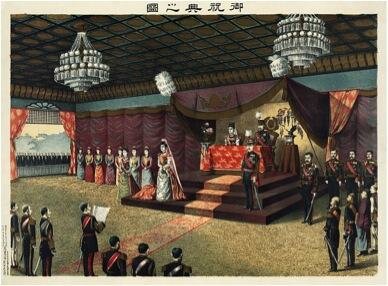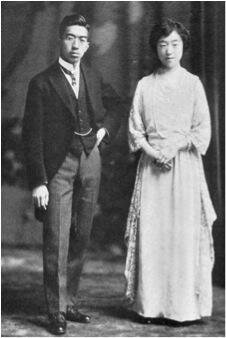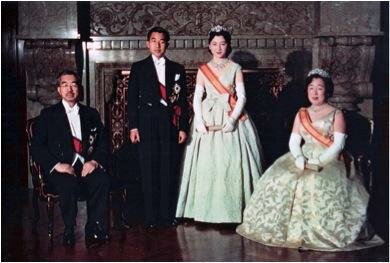Japan's Royal Weddings
With a history of monogamy, nervous breakdowns and a Harvard-educated Princess, the royal marriages seem to encapsulate the paradox that is Japan – progressive yet tradition-bound.
1900

On 10 May 1900, 21-year-old Crown Prince Yoshihito married the 15-year-old Princess Kujō Sadako. The Princess – renowned for her intelligence and eloquence – was purportedly selected by the reigning Emperor Meiji to complement his son’s perceived flaws – among them, a lack of charisma and a disinterest in scholarly pursuits. The relations between the Emperor and Empress were positive, as evidenced by the Prince’s breaking with thousands of years of tradition in refusing concubines. The couple had four sons, and 12 years into marriage, the Crown Prince ascended the throne, where he reigned for 14 years.
1924

Crown Prince Hirohito – the then-21-year-old son of Emperor Taisho – married his distant cousin Princess Nagako Kuni in January 1924. Unlike the strictly arranged marriages of Japan’s imperial tradition, Prince Hirohito was allowed to choose his own bride – at the age of 14, she and other eligible girls of nobility participated in a tea ceremony while the Crown Prince watched through a peephole to make his selection. They were married seven years later, and Princess Nagako bore seven children.
1959


The current Emperor of Japan was married in April 1959 to Michiko Shōda. The marriage of the then-Crown Prince Akihito broke with tradition – his bride of choice was the first commoner to marry into the Japanese Imperial Family. The Empress Kojun was said to have been against the union, and consequently bullied her daughter-in-law into two nervous breakdowns. Three children were born to the couple, and upon the death of Emperor Hirohito on January 7, 1989, the Crown Prince Akihito became Japan's reigning 125th Emperor and she became Empress Consort.
1993

Naruhito, the reigning Crown Prince of Japan, was married in June 1993 to Masako Owada, who like her mother-in-law, is a commoner by birth. The Harvard-educated Crown Princess – fluent in six languages and formerly employed by the Japanese Ministry of Foreign Affairs – was said to have rejected the Prince’s proposals several times before finally honouring his request in December 1992, thus bringing her diplomatic career to an end.
Wearing a 12-layered silk kimono – reportedly costing over US$100,000 – Masako married the Crown Prince in a traditional Shinto ceremony in June 1993. It marked the fourth and last time in the 20th century that a future emperor and empress had stepped into the imperial shrine to sip sake as a gesture of union.
The pressures of living in an imperial household have reportedly taken a toll on the Princess. Princess Masako began retreating from public functions in 2002, and a year later, was hospitalized for a stress-related illness. The Imperial Household consequently announced that she was suffering from an “adjustment disorder” and was undergoing treatment with antidepressants. Many attributed her illnesses to the stress of adjusting to royal duties and expectations, and the overwhelming pressure to produce a male heir. The Crown Prince and Crown Princess celebrated the birth of their daughter, Aiko, eight years into their marriage.



 When she isn't writing children's storybooks or expounding on food, Simone can be found in the kitchen, concocting fiery curries or bravely attempting layers of genoise. She has written for The Business Times Singapore, and also contributed to research in arts and culture across the region at the National University of Singapore. She is currently writing a series of books for preschoolers, to be published soon to the iPhone and iPad.
When she isn't writing children's storybooks or expounding on food, Simone can be found in the kitchen, concocting fiery curries or bravely attempting layers of genoise. She has written for The Business Times Singapore, and also contributed to research in arts and culture across the region at the National University of Singapore. She is currently writing a series of books for preschoolers, to be published soon to the iPhone and iPad.













